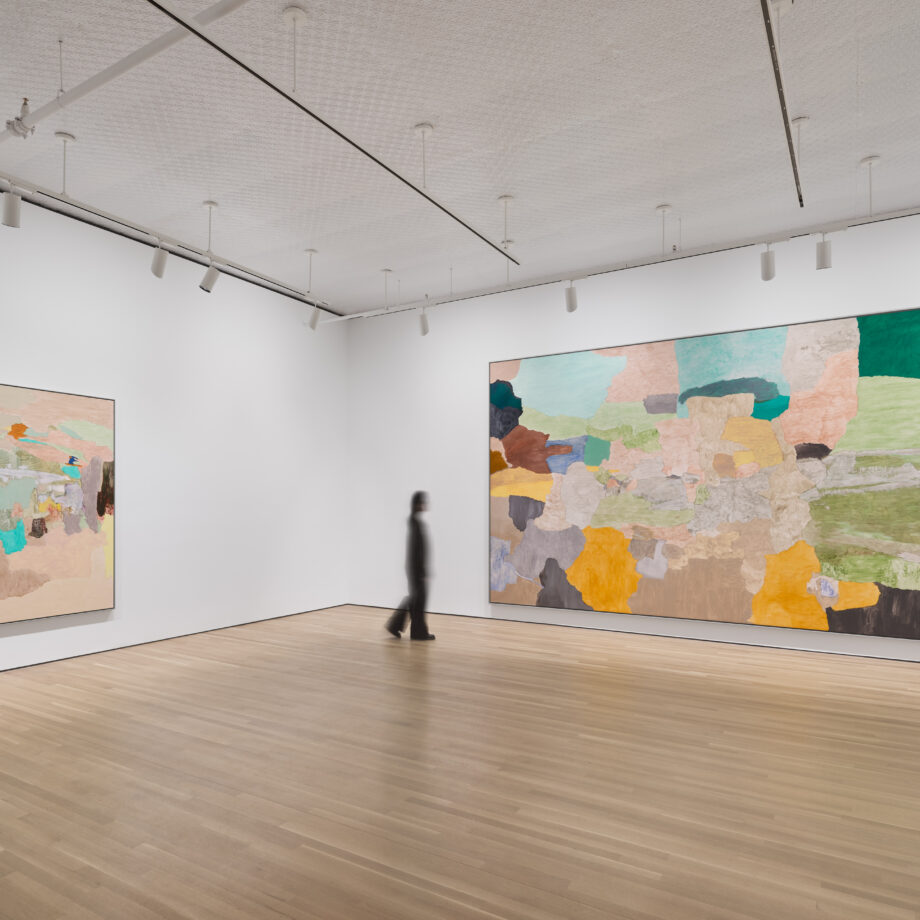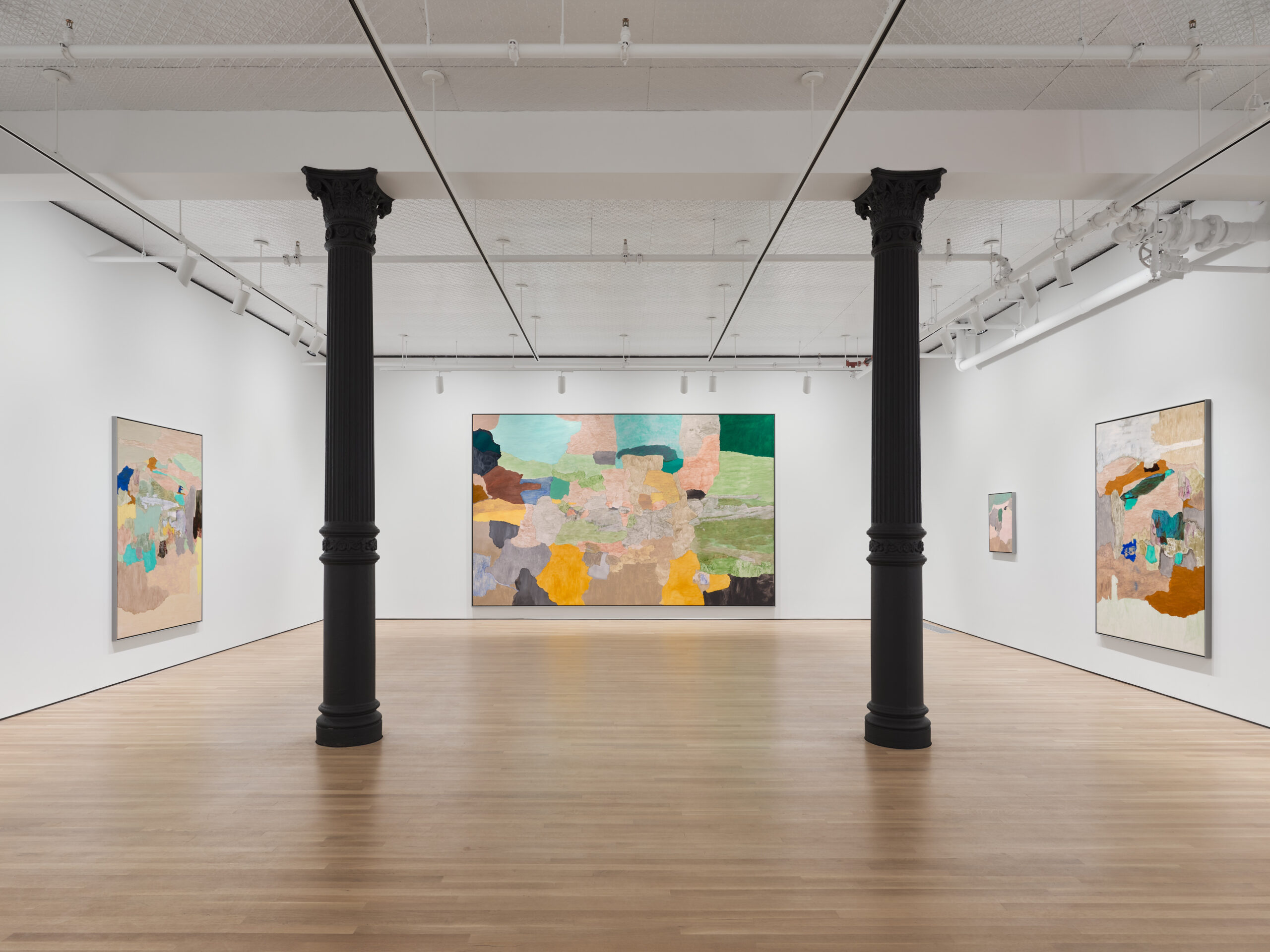
Letting off control is a thrill of Andreas Eriksson’s—the paint’s unmeditated puddlings across the canvas haul his process out of the dangerous zone of boredom. “The better side of me is uncontrolled,” the Swedish painter admits to Elephant. Standing in front of a group of nocturnal-hued paintings at his very first New York exhibition at Stephen Friedman Gallery, he deliberates on his chance-loving practice with an intrigue innate to someone willing to submit to paint’s alchemy. “The more I control the ambition, the more square the process becomes,” he explains. Being away for two weeks from his studio near Lake Vänern, in southern Sweden, has in fact, not been ideal for the balance he has perfected in two decades: “Here, I am constantly stimulated by new things I see around me and start getting ideas of ‘oh I could paint this way or that way’,” and disrupting the natural flow is a risk he would like to avoid. “That is why it is good to paint every day; I lose trust in my process if I don’t constantly paint,” he explains.
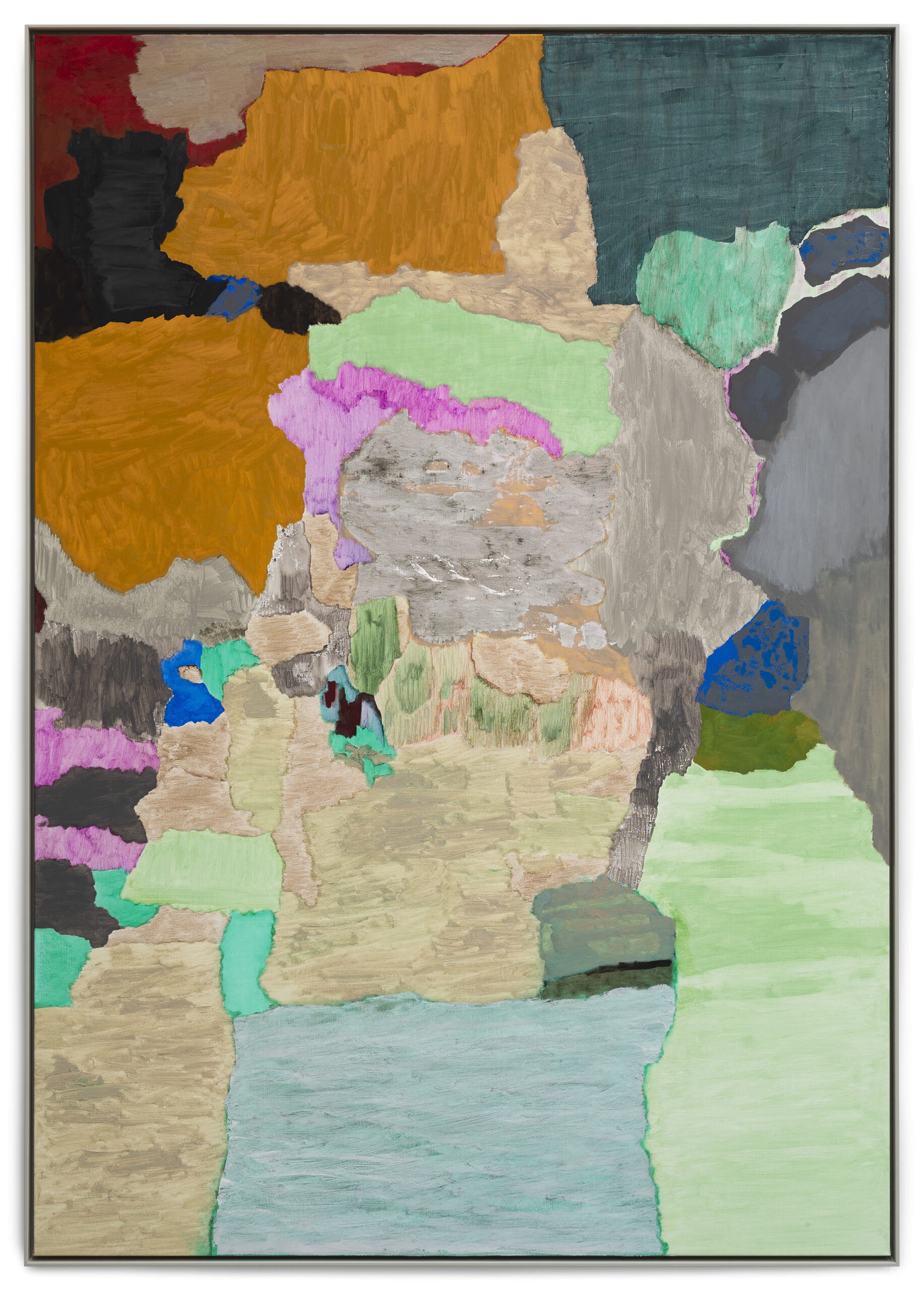
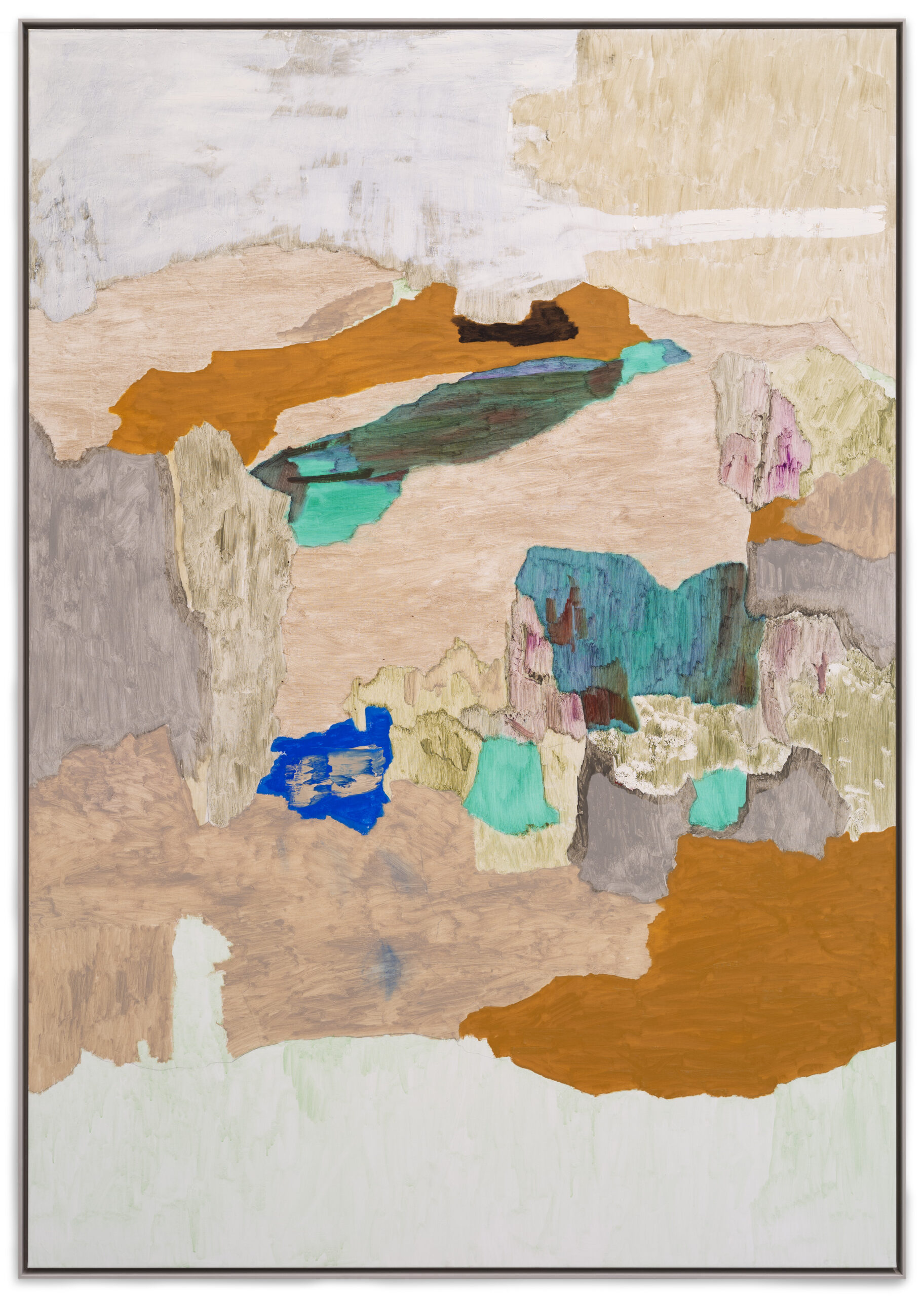
The trappings of flamboyant ideas in painting are amiss in the show, titled Two Columns and A Sunny Day. Rather, the acrylic, egg oil tempera, oil pigments occupy variously-sized estates. Loose ends contain thickly absorbed hues—similar to a bird’s flight over an impossibly-coloured topography; the viewer is compelled to navigate through what may come off as gentle explosions or high-pitch contemplations. In varying scales, the paintings either radiate spring-kissed shades of greens, yellows, and blues or lock nightly tones of the same colours, blanketed by the grey veil of Nordic winter. Andersson paints his surfaces horizontally, enthusiastically for the optic possibilities of his dyes. “I never plan to make paintings look in a certain way—they come by themselves as a dialogue between two colours which later meet the third.” Dalgång—the show’s largest painting—is a horizontal potpourri of sunny colour chunks, tightly interlocked yet inhabiting their landings with effortless determination. Anti-geometries and sharp fluidities coalesce. Light somehow emanates from the canvas, partially due to its scale and also through Eriksson’s freeing gestures, and when observed from a few generous steps back, the painting is bookended by two ornate gallery columns. The firmness of architectural concreteness vertically interjects into the liquidity washing the wall.

The idea of creating lakes of colourations prompted Eriksson after watching the dyes being soaked into the canvas, “and I realized I was indeed dying the surface, more so than painting.” The radiant or darkened formations are also the results of the pigments’ own chemical evolutions, while “a very dry canvas eats up the paint, not because I try to make work that recalls night time or spring.” Living on a hill where there are seven different stone layers inspires the artist, as well as a recent obsession to work with transparent pigments.
As a lover of looking at paintings, Andersson’s eyes often turn to the old guards of American abstract expressionism, like Willem de Kooning, David Novros, or Clyfford Still. In fact, one of his paintings currently sits alongside others, such as Joe Bradley or Georg Baselitz, in an installation at the Buffalo AKG Art Museum, adjacent to the institution’s lengthy survey of Still’s career, titled A Legacy for Buffalo. The grouping celebrates Still’s influence on painters who have absorbed the American non-figurative pioneer’s turbulent colour configurations and electric gestures. These adjectives might echo as exact opposites of Andersson’s painterly drives, but inspiration for him barely resonates with bearing visual parallels with his icons. “I am just in a dialogue with materials in front of the canvas, so my interest in other painters is completely separate,” he says. “1970s’ de Kooning’s are probably the best paintings of the 20th century,” he believes, “but any inspiration from those paintings would be unconscious decision, just like walking around the nature and returning the studio with ideas.” His two-part process involves creating the painting in a two-three day “in a quick state of mind,” and leaving it to dry at the studio for three months, during which the generous Scandinavian breeze does her part.
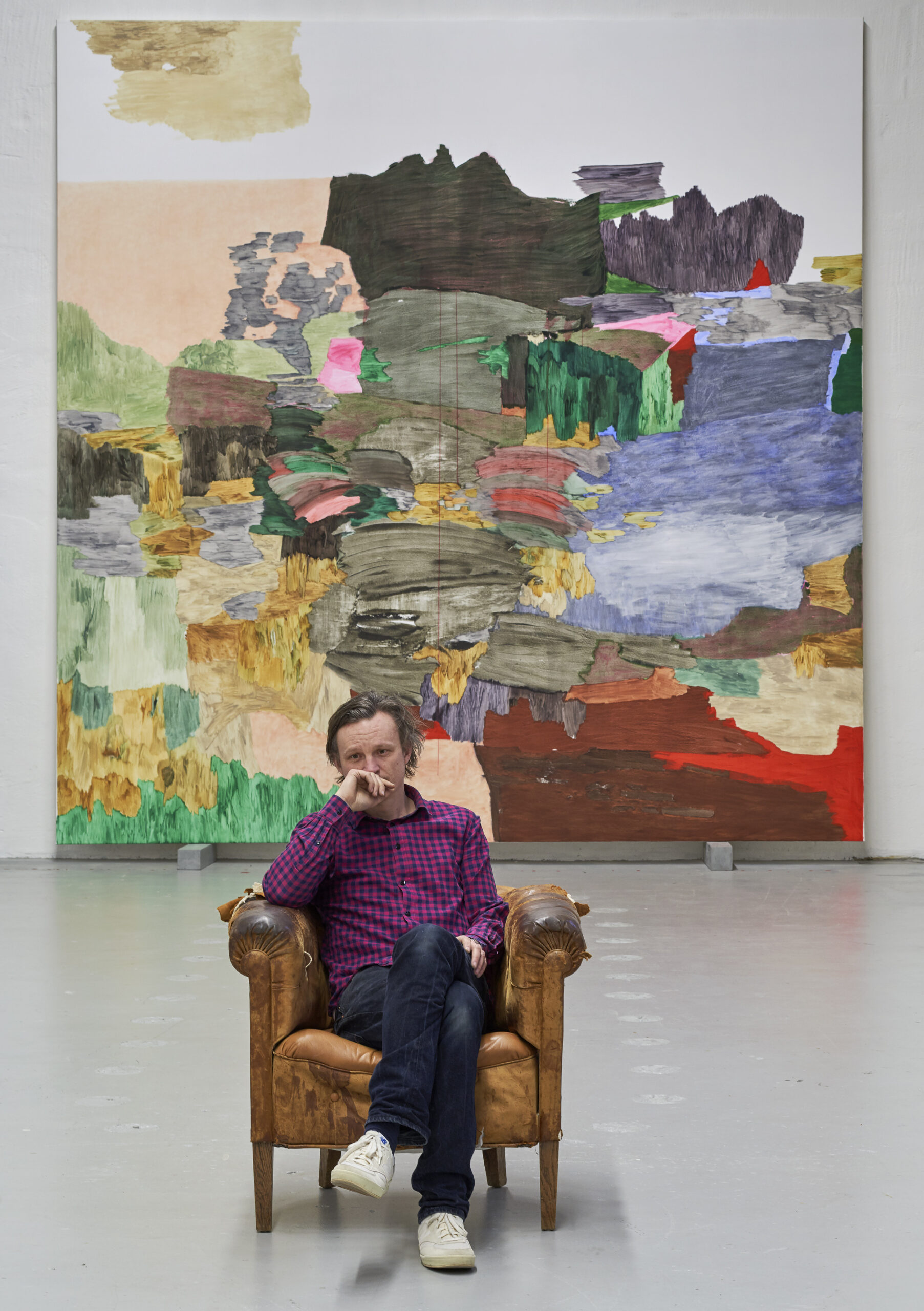
The pure musings of the childhood, however, inhabits his outlook today, especially his very first memory in life. “I still think about looking around the snow-covered mountains as a child and getting snow-blinded by all the whiteness around me,” he remembers. That early immersion into the hypnotizing crispy white is one of the main reasons Eriksson thinks he chose to become a painter. Returning to New York 25 years later for the first time also reminds him today of his twenty-four-year-old self’s ambition to become an artist. The three-four weeks at a $10 a day hotel on Bowery in 1999 taught him the power of knocking on an artist’s studio door. The determination and purely asking for permission exposed him to the workspaces of Robert Rauschenberg, Frank Stella, and Sean Landers—and he met Allen Ginsberg and John Currin in passing. “I was a kid fascinated by 1950s and ‘60s American art and thinking about going to art school,” he says. Despite the wild change of the downtown he stomped a quarter century ago, he finds thrill in New York’s urban grit, more so in Tribeca where his show is today on view, and Eriksson still abides to one major rule in front of the canvas to free his gestures: “Painting is like dancing—if you are suddenly too aware that you’re dancing, your moves won’t be cool anymore.”
Written by Osman Can Yerebakan
